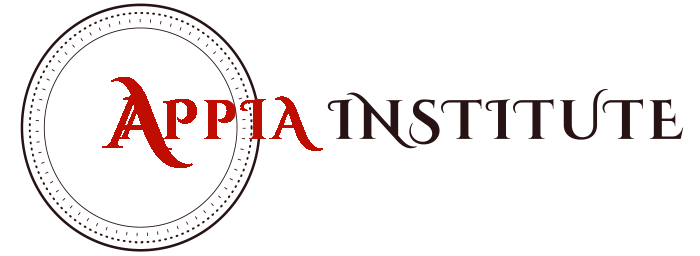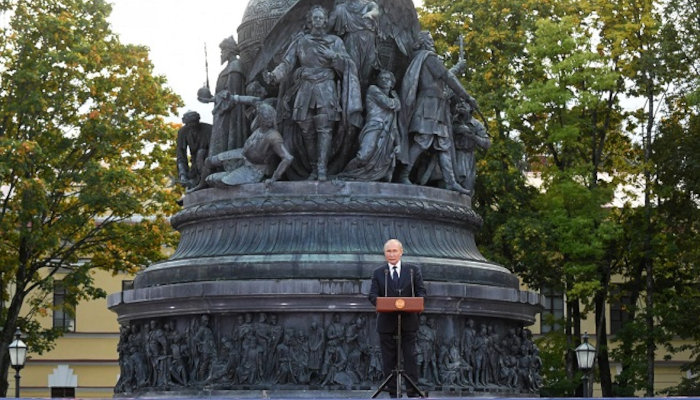
The Party Plenum took inspiration from ancient philosophers to solve its modernization drive. It is a bold and ambitious move that could change the country and the world. Will it work?
Last week, the 2024 Party Plenum issued its decisions, concentrating on the economy[i]. The plan, in a nutshell, was to unify the internal market, better protect property rights, improve the fiscal system, and clarify responsibilities between the central and local administrations. Then, it called on party members to implement decisions proactively and creatively. The party bets that these changes will help stimulate the sagging performance. Indeed, there is much room for improvement here, and even a marginal enhancement could give the massive Chinese production much breathing room.
Yet, it was not just about the economy. A few hours earlier, the Plenum issued a far more innovative communiqué[ii]. China is thinking big—the Communist Party (CPC) is pushing for a massive organizational drive. Bureaucracy and the free market pushed modernization in the West in the 17th-18th centuries, changing everything forever. In the 3rd century B.C., the Qin state unified the Chinese world “All Under Heaven” with the help of a massively bureaucratized state. Can China manage that now, and can a bureaucratized Chinese state gain the upper hand in today’s “Game of Thrones”?
The experience of the Belt and Road Initiative (BRI) proves that Beijing can think and act big; perhaps one should not underestimate the CPC’s plan to change the political and social structure. Then what can other countries do? In the ancient race for bureaucratization, first, large countries gobbled up small countries, and then Qin vanquished all the surviving large states.
A Step Back
Here are some more details about the communiqué. The third Plenum of the 20th Congress was announced as particularly decisive. It was supposed to recall the third Plenum of the 11th Party Congress, held in December 1978, when Deng Xiaoping announced reforms and opened up China. The 2024 communiqué suggests the project will de facto overturn or spin into a new direction in the country after the last 46 years.
In 1978, China was in tatters, shattered, and full of people who didn’t trust the Party. They were survivors of the Cultural Revolution. They had often suffered persecution and had even been imprisoned or sent to labor camps. These people no longer had much confidence in the Party. The Party was challenged to open up to Western market liberalism, and so it did. In the 1980s, a flurry of advisers and counselors came from Reagan’s America or Thatcher’s Britain advising China on reforms. Liberalism seemed to be the answer, perfectly combined with the Party’s extreme weakness.
Today, things are very different. In the past decades, the Party has been getting stronger and more confident with its successes. Today, the Party and its structure play an important role, so it seems natural that the way forward is to strengthen the winning structure. The communiqué announced: 1. to bolster the party organization, 2. to improve the laws and norms regulating party life, and 3. to stress the obligation for Party and non-party members to study relevant documents. The goal is to create a highly efficient and socially solid body.
It is not a new recipe. After over a century of Western cultural influence, from the end of the Qing empire in 1911 to the present, China seems to want to return to find new inspiration in its origins.
The structural strengthening of the state that began around the 7th-6th century B.C. brought about the eventual unification by the State of Qin. It was achieved, historians tell us, precisely because of the consolidation of a bureaucratic apparatus able to manage wealth, assets, materials, and human resources with increasing efficiency. Today, China seems set on similar tracks. The two great inspirers of this process were the philosopher Mozi in the 4th century, who first theorized the bureaucratic state, and Hanfeizi, who inspired the first emperor, Qin Shi Huangdi.
Hanfeizi underlined that the state had to be guided through laws and norms. These two elements are present in today’s CPC communiqué, plus an emphasis on the value of study, which seems to reference the Confucian tradition.
It is a “neoclassical” project that is very different from what happens in the rest of the world. Its contours are not precise, and we must see how it will go.
In any case, modern Western states came into being in the 17th and 18th centuries with the inspiration of the Chinese bureaucracy. These ideas inspired projects to set up a system of civil servants in France, England, and from there on, throughout Europe and the world. The bureaucracy helped the development of the market by taking away the power of the old aristocracy.
The CPC communiqué goes beyond that. It wants a hyper-bureaucratized state that uses laws and has everybody to study and learn. It differs from the old Communist Party and the old autocratic powers centered on one man giving orders left and right. Instead, it is a power of offices, supposed to function according to laws with people who learn to follow the rules and patterns.
Here, the role of the market is essential but unclear. In the ancient Chinese bureaucratic state, the market acted as a transmission channel but did not have the central function it has in capitalism. The Chinese historically know about the bureaucratic state, whereas they don’t know about the free market or democracy, which is not in their cultural DNA. Thus, the bureaucratic state is easier to apply. However, it does not rule out democracy, although in the past, when mentioned, it was very different than in the West.
The hyper-bureaucratized state exploded in the Qin state with the first emperor because too much bureaucracy and control burst the state itself. Today, we are still far from thinking about an explosion because we are just at the beginning of this project. Moreover, the bureaucracy in the past did not have all the technology available now. Today, thousands of control and communication tools make everything much more effective. There are almost 100 million Party Members, one Party Member on average for every ten people, excluding children. It’s a gigantic apparatus that could be very efficient or extremely hard to manage.
The Party of Bureaucracy
This bureaucratic organization aims to bring uniformity to people toward the top—President Xi Jinping. In some ways, it prepares China for eventual sieges but also to face a potentially weaker world; if China is strengthened internally, it can better withstand assaults from outside or advance, possibly with much more effectiveness. It can work both defensively and offensively, as the bureaucratic state of the 3rd-4th century B.C. did. It is a long-term project that will not be fully implemented in a couple of years. The 1978 reforms started moving the Chinese economy only a decade after their official launch.
Still, there is a significant problem addressed by Mozi and Hanfeizi in the 3rd century B.C.—how do you motivate the bureaucrats? They argued that people needed the “two levers”: greed and fear of punishment—the possibility of being rewarded and the fear of retribution. It’s unclear how modern Chinese officials will implement this.
Deng’s reforms worked because they turned all Chinese bureaucrats into entrepreneurs, i.e., entrepreneurs for their own offices, regions, municipalities, and cities, developing businesses and taking bribes. The system imploded because excessive corruption killed the actual business. Xi’s anti-corruption drive planned to eradicate it, and it essentially did. But so far, the entrepreneurs or officials are not enthusiastic, and there are no new market rules.
Many Chinese pundits argue that these should start with complete legal protection of property rights, which would limit de facto Party powers. Here lies the contradiction: to bolster the Party’s control, the Party should protect property rights, which restrict party powers. The contradiction is solved in capitalist countries by admitting a division of powers. It’s not clear whether the Party is willing to go that far.
Moreover, bureaucrats now fear that if they make decisions, they can make mistakes, so they don’t decide. It is unclear what incentive will be given to bureaucrats who lost so much power and money in the anti-corruption drive.
In any case, no other country has equally ambitious projects, which may give China an edge.
finis
[i] http://www.news.cn/politics/20240721/cec09ea2bde840dfb99331c48ab5523a/c.html
[ii] 受权发布|中国共产党第二十届中央委员会第三次全体会议公报 http://www.news.cn/politics/leaders/20240718/a41ada3016874e358d5064bba05eba98/c.html









A neoclassical resolution for China - Drimble World News
A neoclassical solution for China – Yerepouni Daily News
World – China – Capitalism or Barbarians - SettimanaNews